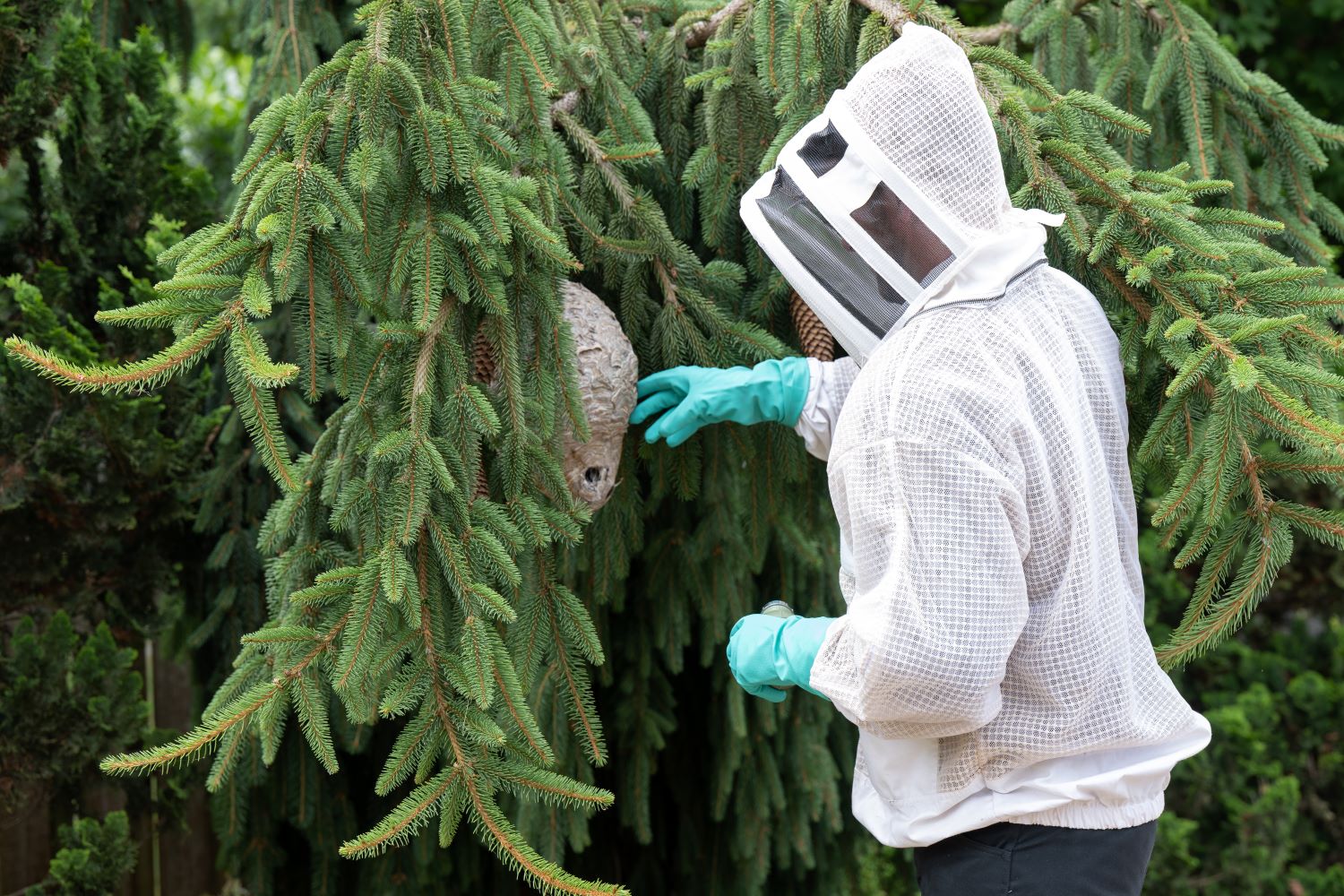Stinging Insect Removal - What You Need To Know

Having stinging insects on your property is always cause for concern, especially for households with children, pets, or elderly family members. Whether it’s hornets, yellow jackets, or wasps, these pests can cause painful stings, allergic reactions, and in some cases, serious medical emergencies. Stinging Insect Removal is a task not to be undertaken lightly.
Identifying Stinging Insects in NJ, PA, DE, and MD
Stinging insects come in many forms, and knowing what’s buzzing around your property can help you understand the risks involved. Here are some of the the most common types of stinging insects we encounter throughout the Mid-Atlantic region:

Yellow jackets are easily identified by their bright yellow and black bodies, narrow waists, hairless hind legs, six legs, large antennae, and size ranging from 3/8 to 5/8 of an inch. Their nests, often hidden, are constructed from chewed wood fiber that resembles paper mâché and have small entrances about the size of a nickel. Yellow jackets rarely travel more than a mile from their colonies, so frequent sightings likely mean a nest is nearby. They are attracted to food sources like grilling meats, sweets, open trash, and food residue, especially sugars, carbs, and proteins. It can be very tricky to get rid of Yellow Jackets given their aggressiveness and their tendency nest underground.
 Hornets are often mistaken for bees or other wasps, but can be identified by their larger size, averaging 1.25 inches but growing over 2 inches long, and their rounder, plumper bodies with a pronounced abdomen and large head. Their coloring typically includes yellow-orange and black stripes, though some may appear more red or brown. Unlike bees, hornets can sting multiple times without losing their stinger, and their venom is more potent, making their stings especially painful. While generally less aggressive than other wasps, hornets will defend their nests if threatened.
Hornets are often mistaken for bees or other wasps, but can be identified by their larger size, averaging 1.25 inches but growing over 2 inches long, and their rounder, plumper bodies with a pronounced abdomen and large head. Their coloring typically includes yellow-orange and black stripes, though some may appear more red or brown. Unlike bees, hornets can sting multiple times without losing their stinger, and their venom is more potent, making their stings especially painful. While generally less aggressive than other wasps, hornets will defend their nests if threatened.
 Paper wasps are commonly found building their distinctive open-comb nests under eaves and overhangs. They are brown with yellow or reddish markings and are more slender than bees. They are 5/8 of an inch to just shy of a full inch long. Paper wasp removal is not a task to be taken lightly. While typically less aggressive than yellow jackets, they will defend their nests if provoked.
Paper wasps are commonly found building their distinctive open-comb nests under eaves and overhangs. They are brown with yellow or reddish markings and are more slender than bees. They are 5/8 of an inch to just shy of a full inch long. Paper wasp removal is not a task to be taken lightly. While typically less aggressive than yellow jackets, they will defend their nests if provoked.
Why DIY Removal is Dangerous
Attempting to remove stinging insects on your own is risky business. Disturbing a nest can lead to numerous painful stings, and for those allergic to bee, wasp, or hornet venom, the consequences can be severe — even life-threatening. Allergic reactions can include swelling of the throat, difficulty breathing, and anaphylaxis, all of which require immediate medical care.
Rather than risking your safety, let Viking Pest Control handle the job quickly and safely.
Why Choose Viking Pest Control for Stinging Insect Removal
When you work with Viking Pest Control, you’re partnering with a trusted team with decades of experience protecting homes and businesses across NJ, PA, DE, and MD’s Eastern Shore. We don’t just remove stinging insects; we eliminate the source and ensure your home remains protected against future infestations.
Our highly trained pest professionals use specialized equipment and proven techniques to safely remove active nests from your property, whether they’re tucked under your deck, inside a wall void, or high in a tree. With Viking, you can trust the job will be done right — safely, efficiently, and thoroughly.
Tips for Preventing Stinging Insects
While professional pest control is your best line of defense, here are some proactive steps you can take to reduce the likelihood of stinging pests setting up shop on your property:
- Store sweet foods securely. Keep fruits, syrups, and sugary items sealed or refrigerated.
- Maintain your yard. Regularly mow the lawn, trim overgrown trees, and remove yard debris like fallen leaves.
- Strategically place flowers. Keep flowering plants and gardens a safe distance from your home’s entrances.
- Check your home’s exterior. Ensure windows and doors are tightly sealed and screens are intact.
- Properly manage trash. Store garbage in tightly lidded containers and keep compost piles covered.
- Inspect regularly. Look for signs of nests under eaves, in shrubs, or even holes in the ground where wasps may burrow.
Don’t Let Stinging Insects Take Over Your Yard
If bees, wasps, or hornets have made your property their home, don’t try to tackle the problem yourself. Trust the experts at Viking Pest Control to remove the infestation safely and ensure your family and pets stay protected.
Call Viking Pest Control today or request a free estimate. We make pest control easy, so you can get back to enjoying your home — sting-free.











